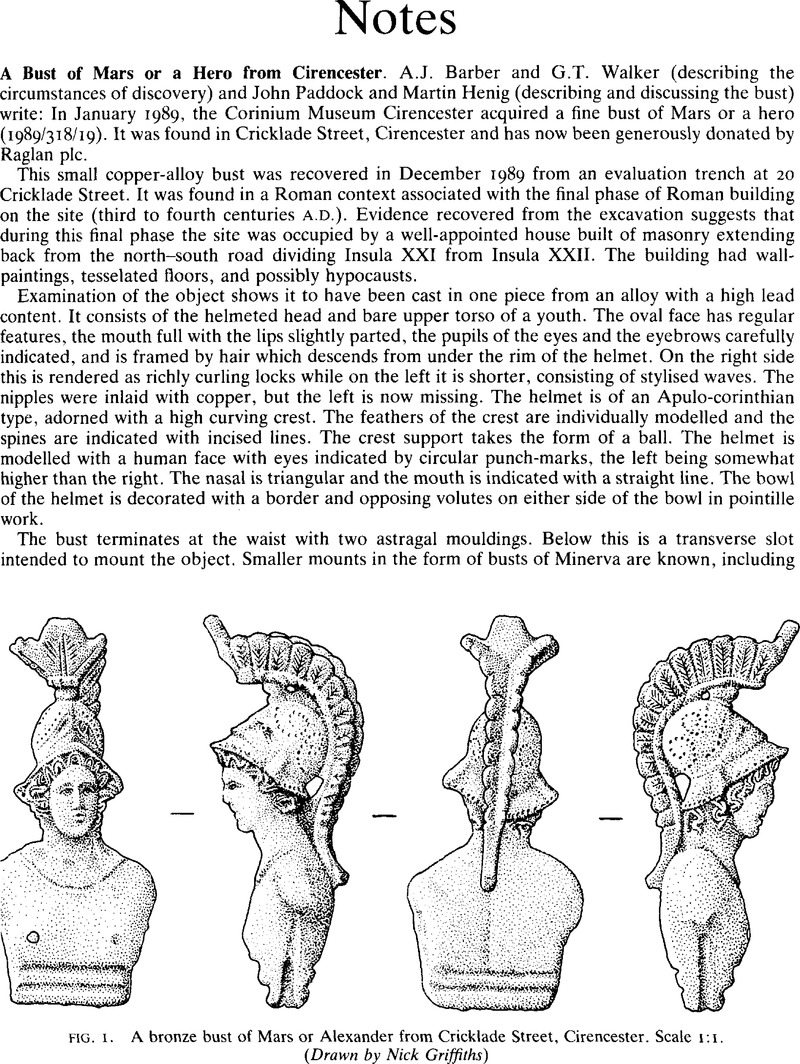No CrossRef data available.
Article contents
A Bust of Mars or a Hero from Cirencester
Published online by Cambridge University Press: 09 November 2011
Abstract

- Type
- Notes
- Information
- Copyright
- Copyright © A.J. Barber, G.T. Walker, John Paddock and Martin Henig 1992. Exclusive Licence to Publish: The Society for the Promotion of Roman Studies
References
1 M. Henig, ‘The Minerva Bust’, in The Chessalls Excavations Kingscote 1975–78 Seasons, Kingscote Archaeological Association (1989), 19.
2 Whiting, W., Hawley, W., and May, T., Report on the Excavation of the Roman Cemetery at Ospringe, Kent, Soc. Antiq. Research Rept. VIII (1931)Google Scholar, pl. lv. Boon, G., ‘Tonsor Humanus: Razor and toilet-knife in antiquity’, Britannia xxii (1991), 21–32.CrossRefGoogle Scholar
3 Menzel, H., Die römischen Bronzen aus Deutschland, ii. Trier (1966), no. 12; iii. Bonn (1986), no. 14; G. Faider-Feytmans, Les Bronzes romains de Belgique (1979), nos 8–26; A.N. Zadoks-Josephus Jitta, W.J.T. Peters, and W.A. van Es, Roman Bronze Statuettes from the Netherlands, i. North of the Limes (1967), nos 17–23; J.M.C. Toynbee, Art in Roman Britain (1962), no. 16 for the Foss Dyke bronze; no. 17 from the temple at Lamyatt Beacon.Google Scholar
4 M. Bieber, Alexander the Great in Greek and Roman Art (1964), esp. 59–61; for Alexander's beauty see Plutarch, Alexander IV, i.
5 Henig, M., ‘“The Alexander” gem from Caerleon’, Bull. Board Celt. Studies xxviii (1979), 317–18.Google Scholar
6 Painter, K.S., The Mildenhall Treasure. Roman Silver from East Anglia (1977), 27 no. 7, pl. 22.Google Scholar


